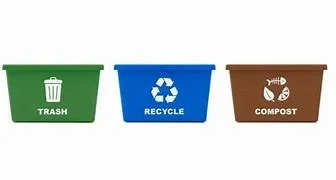Let’s Get Scrappy
Food Waste Disposal in Shasta County
Senate Bill 1383 was passed in September 2016 to reduce the amount of organic waste deposited into landfills by 75% by 2025, and rescue at least 20% of disposed edible food and redirect it to people in need. Organic materials decomposing in landfills generate methane gas, a potent greenhouse gas that impacts climate around the world. The state agency in charge of implementation is California Department of Resources Recycling and Recovery, CalRecycle.
When SB 1383 was implemented in January 2024, all jurisdictions where waste is hauled by commercial hauling companies were to start collecting and processing residential and commercial food waste and institute programs to redirect edible food to agencies for distribution.
This has turned out to be a very significant element to waste collectors and processors in Shasta County. Based on a conversation with Leo Coleman from City of Redding Solid Waste Department, raw or frozen food waste from residences is to be placed in each residential green waste collection bin. Food waste is not to be put in any plastic bag even if the bag is “recyclable or decomposable” but rather, put in the bin Paper bags. Food waste may be frozen prior to bin placement. The City has free containers shown below that hold 2 ¼ gallons of food waste. These are for continual use at home to store food waste until it is emptied into the green waste collection bin for normal City garbage collection day.
Commercial food waste is collected 3 days per week by City of Redding Solid Waste Department or is it 3 different routes once per week? The commercial containers are brown and hold 1-2 cubic yards.
Residential food waste comingled with residential organic yard waste is processed at the City of Redding’s compost yard by enclosing yard waste and food waste in a long circular tube for 6-7 weeks and aerating it with perforated tubes. It is then tested, rescreened, and sold to the public.
Because the City does not have existing facilities to process large volumes of commercial food waste, 65-70% of Redding’s commercial food waste is hauled to a rendering plant in Oroville. Based on collection volumes in fall 2024, further improvements will likely occur as more businesses in Redding are put on the collection routes. Unused edible food from businesses is being redirected to people in need.
The City of Redding is also planning to take some of the food waste to the City Wastewater Treatment Facility south of Clear Creek to process it using the pyrolysis process where the methane gas generated would be used at the treatment plant. Target year for this to begin is approximately 2026.
City of Anderson residential waste is collected by Waste Management Inc who also owns a landfill (Anderson Landfill) off Cambridge Road west of Anderson. No food waste is collected separately from other household waste, and therefore, all is landfilled. Waste Management reportedly has plans to open an organic waste area at the landfill around the first of 2026 at which time green organic waste and food waste would be collected and placed at the landfill in compliance with AB 1383.
City of Shasta Lake residential waste is also collected by Waste Management Inc. Collection containers include household garbage comingled with food waste, recyclables, and organic yard waste. When a food waste processing facility has been constructed by Waste Management, the food waste will be comingled with the green organic waste container as the City of Redding is currently doing. One grocery store currently arranges for edible food pickup for food bank distribution.
No food waste is currently collected separately from garbage in County areas outside Redding, Anderson, and Shasta Lake. When Waste Management builds their organic treatment area at the Anderson Landfill, areas within and near these cities will have residential containers for food waste to be comingled with green waste. This geographical area will include areas where houses are spaced relatively close together including Palo Cedro, Cottonwood, Jones Valley, Old Shasta, and Happy Valley. Areas with no garbage service or widely spaced houses will be exempted from food waste collection.

